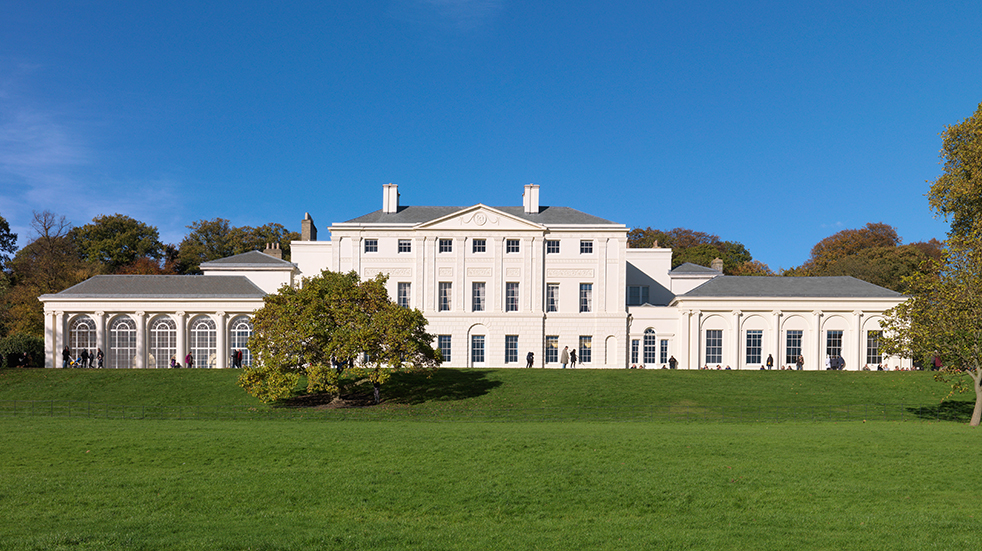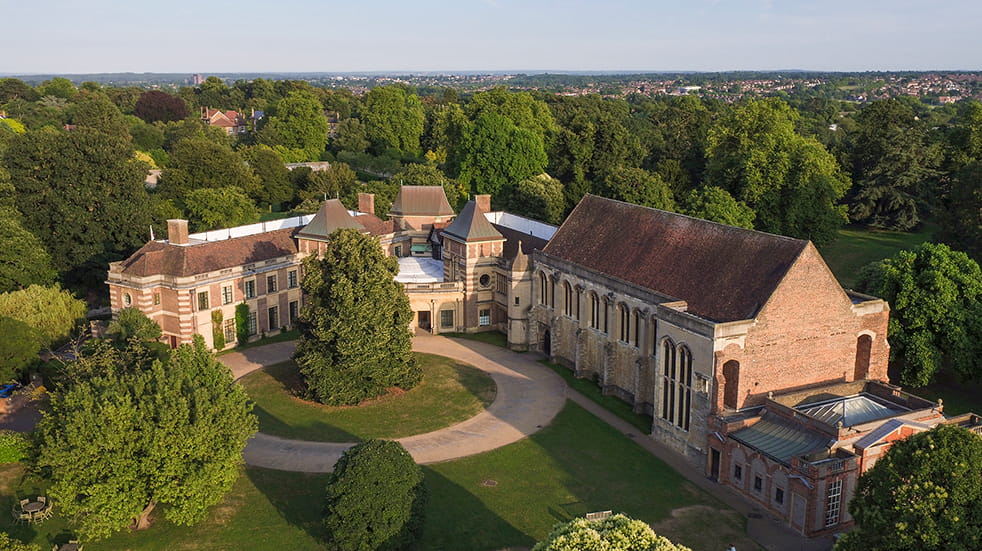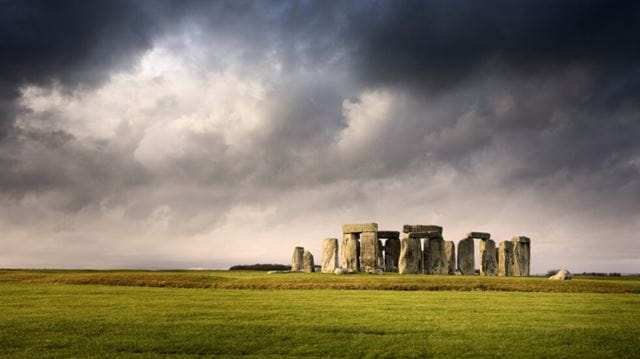
Plan a family day out at one of England's finest castles, combining history and legends with fun activities and amazing views
Whether it's a captivating castle, a prehistoric monument, a 17th-century mansion or even a cold-war bunker, English Heritage has a wealth of breathtaking properties to explore.
All over England are sites in the care of English Heritage, ranging from a huge 12th-century stone fortress with secret wartime tunnels to ruined remains that have inspired painters. We've chosen the most impressive sites around the country for a family day out to remember.
South-west England and the Isle of Wight
Carisbrooke Castle
Situated near Newport at the centre of the Isle of Wight, Carisbrooke Castle has a storied history. It was used as an Elizabethan artillery fortress, a prison for Charles I during the Civil War in 1647–48, and a summer residence for Princess Beatrice, Queen Victoria’s youngest daughter. The prominent hilltop first became the site of fortification in around 1000, and was converted into a castle by the Normans soon after the Norman conquest.
The castle is a great place for families to explore. There are cobblestoned stairs to climb, a bowling green to run around, and the high walls of the keep to clamber on – from the battlements you can take in views across the island in every direction.
While you're here, you can also visit the castle's museum and Edwardian garden, and meet its family of resident donkeys: Jigsaw, Jack and Jill. Watch them demonstrate the tread-wheel used to raise water from the well or see them relaxing on the lawns.
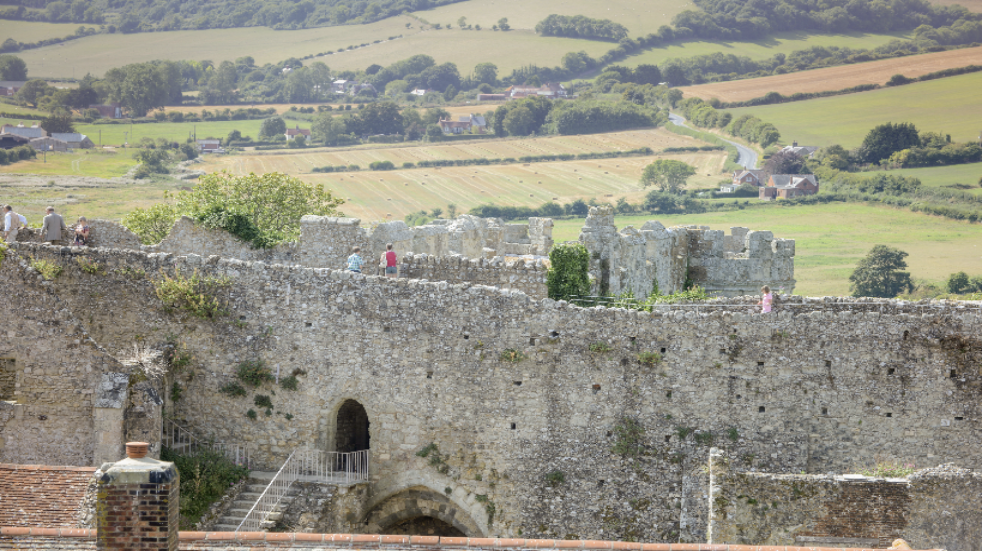
Tintagel Castle
Built by Richard, Earl of Cornwall, the remains of the 13th-century Tintagel Castle are situated on the rugged northern coast of Cornwall between Padstow and Bude, among scenery that’s simply breathtaking. From around AD450–650, Tintagel was an important site for trading with the Mediterranean – a 7th-century slate inscribed with Latin, Greek and Celtic words was recently discovered here. The site was of no military value; instead, the earl seems to have been inspired by the myths surrounding the location.
In 1138, Geoffrey of Monmouth wrote his fictional History of the Kings of Britain, which named Tintagel as the place at which King Arthur was conceived by Uther Pendragon and Igerna. Inspired by Geoffrey’s legend, Richard, Earl of Cornwall began building a castle here in 1225.
Today, the castle is split across the mainland and an island – climb the 148 steps up to it to discover the low stone walls of a settlement dating from the early middle ages. Take in the natural beauty of the dramatic promontory and be rewarded with the views along the rocky coast. Then explore the far side of the island, where you'll find an imposing 8ft-tall sculpture of a King Arthur-like figure. You can also see the remains of the settlement in which Cornish rulers lived from around AD450–650.
A beach below the castle is ideal for a paddle or for exploring rock pools and, twice a day, the receding tide allows access to a dark cove known as Merlin's Cave.
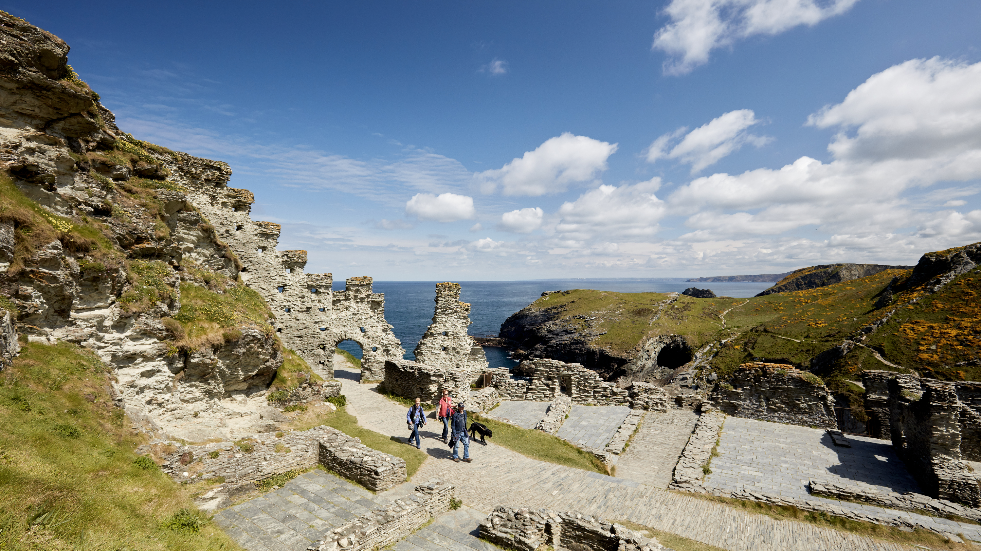
Portchester Castle
Portchester Castle is the best-preserved of the Roman 'Saxon Shore' forts along England's south coast and is the ideal location for a fun family day out. The fortress was built in Portsmouth Harbour in the late 3rd century as the Roman Empire faced continued attacks from 'barbarian' tribes. Following the Norman Conquest, a castle was subsequently built in one corner of the fort.
The keep has an exhibition on the history of both the castle and Portchester village, along with displays of archeological finds from the site, while an audio tour brings the castle's centuries-long story to life.
The castle also hosts a diverse selection of events, including outdoor theatre and the heart-thumping re-enactment Clash of the Romans, in which two teams of soldiers fight it out. Visit the Portchester Castle website for further information.
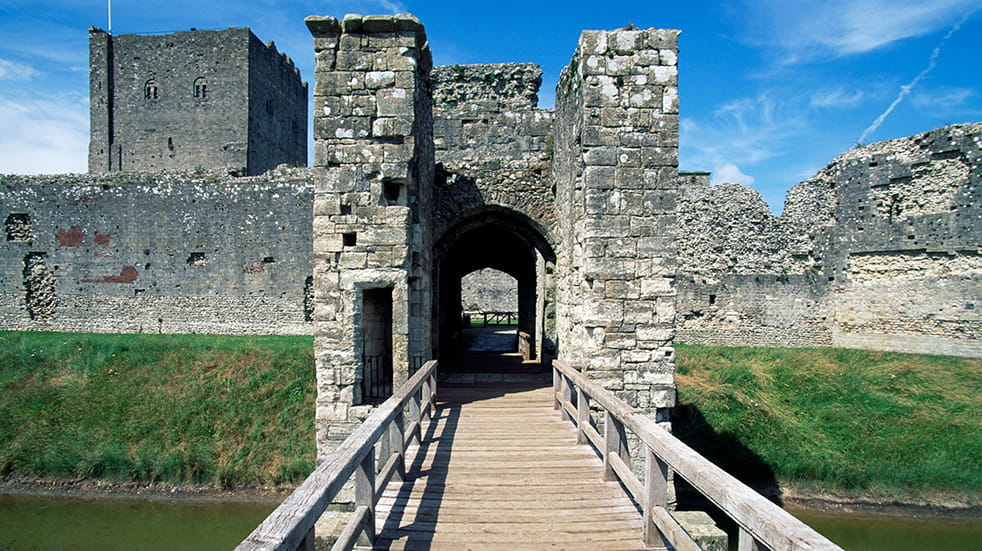
Stonehenge
The stone circle at Stonehenge was built in the late Neolithic period – and, some 4,500 years later, its 83 stones are still an amazing sight. It is thought that the monument was positioned to mark the summer and winter solstices. The circle is made up of sarsen stones weighing 25 tons, which it's believed were brought from the Marlborough Downs 20 miles away, and bluestones, which came from the Preseli Hills in south-west Wales. The monument is a masterpiece of prehistoric engineering and it's still not known how the bluestones were transported more than 150 miles to Salisbury Plain. It's little wonder that the mystery and the majesty of the monument continue to enthrall visitors to this day.
As well as experiencing the majesty of the stone circle itself, there's an engaging visitor centre that features over 250 archaeological objects discovered in the landscape around Stonehenge, including tools, pottery and even ancient human remains. Plus, five replicas of Neolithic houses give you the chance to imagine how people lived thousands of years ago.
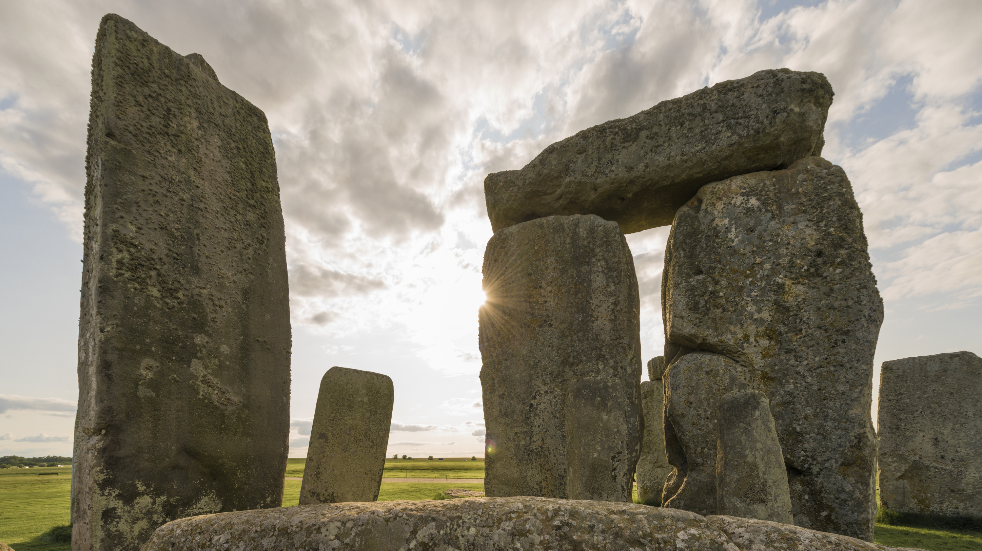
Osborne
Osborne was Queen Victoria's palatial holiday home on the Isle of Wight, and combines stunning interiors, sprawling grounds, a quirky museum and even its own beach. Victoria and Albert bought the estate in 1845 and Victoria used it for over 50 years. Many of the rooms still have original furniture and works of art. In particular, an expansive dining room known as the Durbar Room features an elaborate Indian design that still looks stunning over 125 years after it was completed. The house featured in the 2017 film Victoria & Abdul, which starred Judi Dench as Victoria.
Outside, children will love the Swiss cottage, which features an unusual museum filled with curious objects from around the world. They can then take part in a wildlife trail on their way to the private beach, where you can go for a paddle or a swim and enjoy an ice cream from the cafe. There are also two playgrounds.
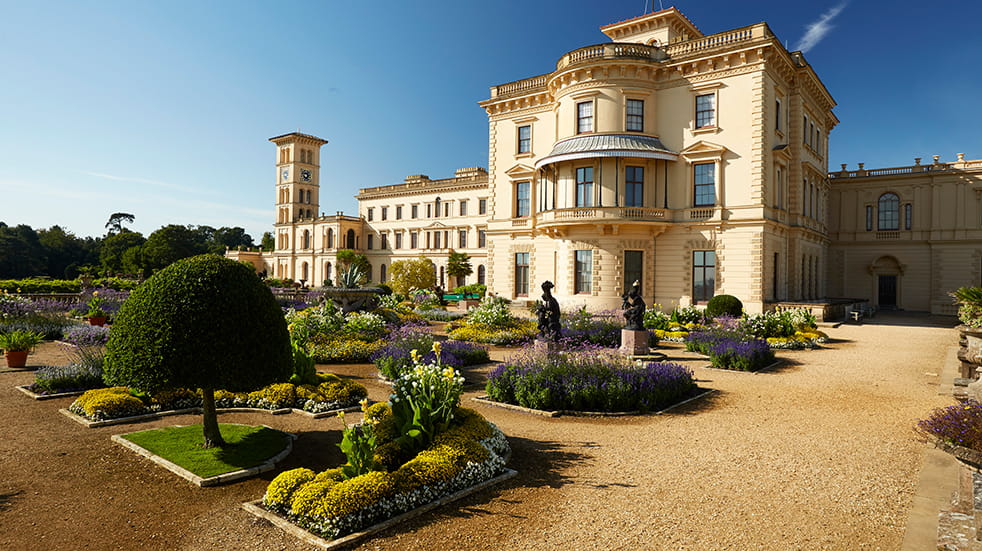
Pendennis Castle
This coastal fortress, one of a chain built by Henry VIII to counter threats from France and Spain, has defended Cornwall against invasion since Tudor times. Pendennis Castle has been part of numerous conflicts and was one of the last royalist strongholds to fall during the English Civil War in the 1640s.
Visitors can view the Tudor gun deck in the keep and the restored underground Victorian defences, as well as enjoying 360-degree views of Falmouth and the bay.
Plus, every day between April and October (except when events are taking place), don't miss the castle's gun crew – dressed in authentic Edwardian uniform – firing a huge naval 12-pounder gun. It's one of the original working guns from the castle's collection, which also includes Napoleonic, Victorian and 20th-century guns and cannons.
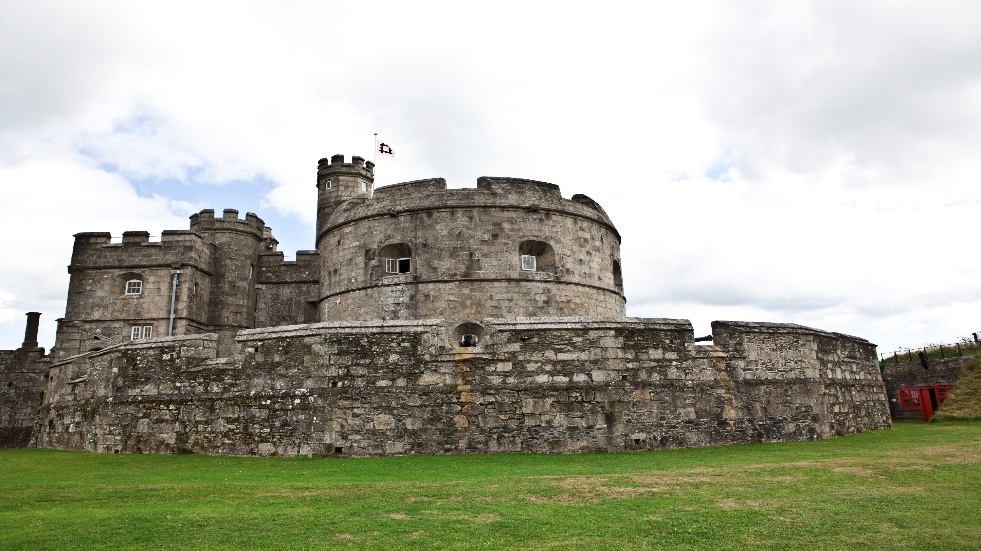
Offa's Dyke
Offa's Dyke was constructed along the border between England and Wales in the 780s on the orders of Offa, the Anglo-Saxon king of the Mercians, a warrior tribe from central England. Today, the great earthwork – which required thousands of men to build – is the basis for a National Trail that stretches for 177 miles, from Chepstow in the south to Prestatyn in the north.
A three-mile section in English Heritage's care is at the southern end of the dyke and runs through enchanting woodlands – the ideal place to fuel children's imaginations. This stretch includes the Devil's Pulpit, a narrow pillar of limestone that provides splendid views over Tintern Abbey, the best preserved medieval abbey in Wales – its remains date from a 400-year period between 1131 and 1536. Park at Tidenham Chase, from where it's a one-mile walk to the Devil's Pulpit. Walking boots or wellies recommended!
South-east England
Dover Castle
England's first line of defence for 900 years, Dover Castle is the country's most iconic fortress. Henry II began building the great stone castle – the largest in England – above Dover's iconic white cliffs in the 1180s. A siege in 1216–17 lasted ten months, during which the castle resisted bombardment by siege engines.
Its buildings and defences continued to be adapted over 800 years, including a network of tunnels that was dug in from the cliff face in the 18th century for use as barracks. These subsequently housed the command centre from which Vice-Admiral Bertram Ramsay masterminded the evacuation of British troops from Dunkirk during the Second World War, known as Operation Dynamo. After exploring the winding tunnels, discover the underground hospital, where you can follow what happens to a wounded Second World War pilot, and see projections and real film footage that bring Operation Dynamo to life. The tunnels, which you can see as part of a visit to the castle, were later transformed into a huge cold war bunker designed to house a regional government in the event of a nuclear attack.
There are regular special events at the castle, the highlight of which is the annual medieval joust, which takes place over three days in August. Thrill at the spectacle of four brave knights battling for victory on their powerful steeds, while budding young knights can even test their skills at hobby-horse jousting. See the English Heritage website for more details.
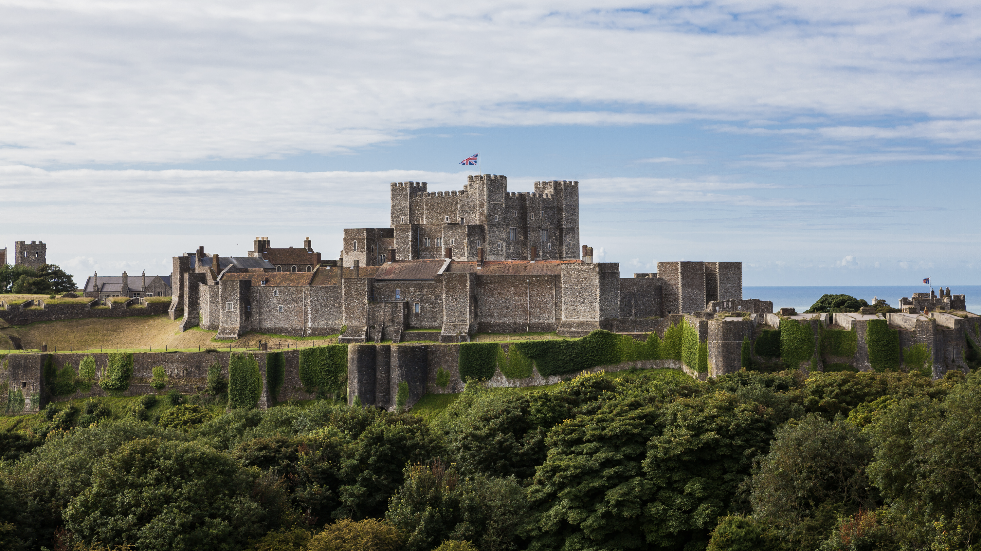
Battle Abbey
This site of Battle Abbey marks the very place in which the armies of William the Conqueror and King Harold clashed in the Battle of Hastings on 14 October 1066 – a conflict that changed the shape of England's history. After he defeated Harold and became king of England, William founded the abbey as a memorial to those who died, and the altar of the abbey's church marks where Harold was killed. After you've explored the abbey's ruins, you can head up to the roof for spectacular views across the battlefield.
You can also explore the battlefield itself and experience the battle with an audio guide (there's also a children's version), follow a new sculpture trail, and engage with the exhibits in the visitor centre, which now features interactive displays. Regular events include falconry, outdoor theatre and, in October, a huge Battle of Hastings re-enactment – see the Battle Abbey website for details.
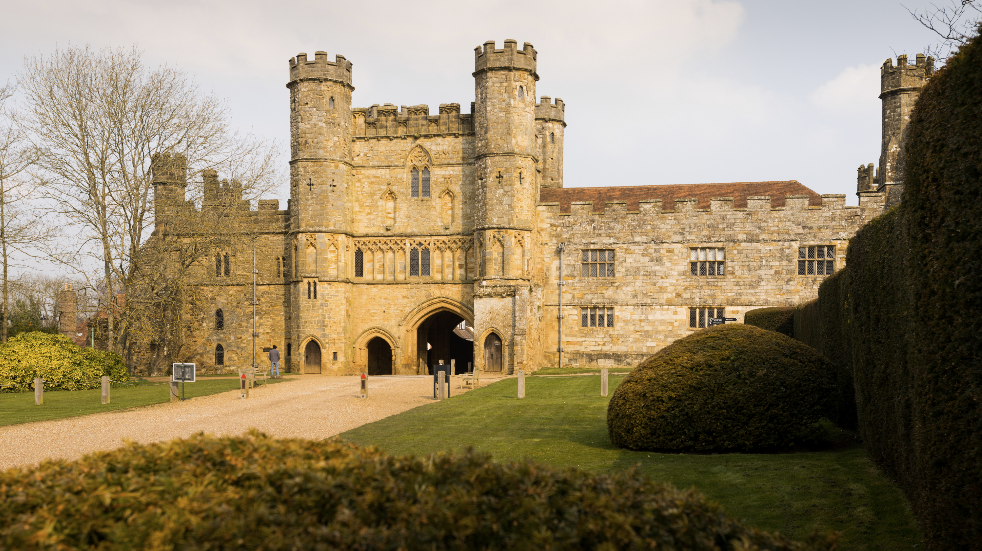
Tilbury Fort
For 400 years, Tilbury Fort in Essex defended the approach to London on the Thames estuary. The first fort here was built by Henry VIII, and his daughter Queen Elizabeth I gathered her army nearby to counter the threat of the Armada in 1588. The fort that can be seen today, which dates from the late 17th century, is notable for the striking geometric shapes formed by angled bastions (which allow defensive fire in several directions) that project out into a series of moats.
An exhibition tells the tale of the fort's rich history, while an audio tour includes Elizabeth I's Armada speech and an account of life at the fort by its master gunner. Children will enjoy exploring the bastion passages and the magazine houses, which were used to store huge amounts of gunpowder, and can also play with the enormous artillery guns, many of which can be rotated and adjusted.
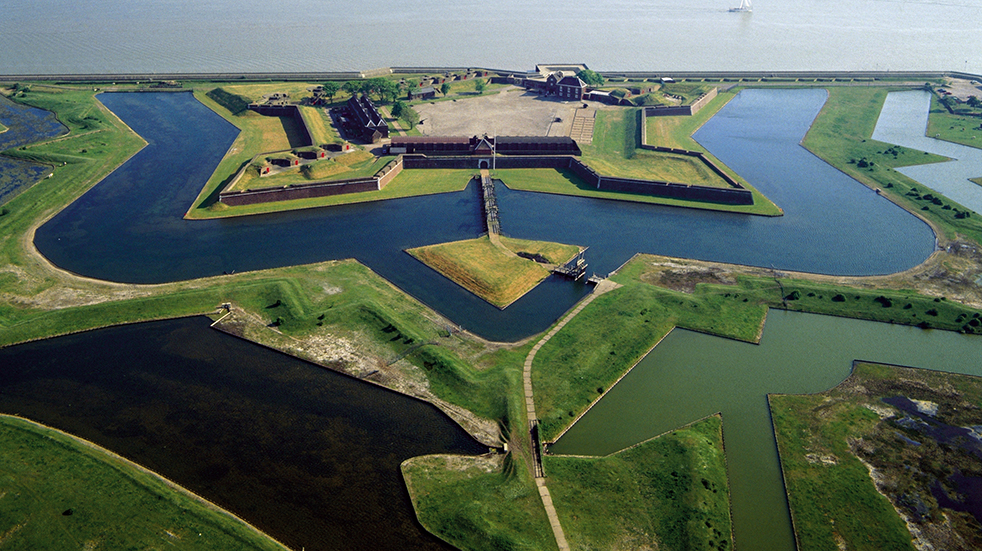
Kenwood
In 1925, Edward Cecil Guinness (of the Guinness brewery fortune), 1st Earl of Iveagh, bought the architecturally stunning Kenwood House in Hampstead. Three years later, it was opened to the public as a museum, filled with over 60 old master paintings that had been collected by the earl. Known as the Iveagh Bequest, the collection is still on show today and includes Rembrandt's celebrated self-portrait, along with works by Reynolds, Gainsborough and Turner.
Yet there's more to Kenwood than its paintings alone. It's set in 112 acres, which contain ancient woodland and beautiful sculptures. Explorer backpacks, specially designed for under-fives, allow young visitors to choose discovery tools to take with them as they explore Kenwood. There's also a trail for children aged five to 11 that takes in both the house and the wider estate, while a family zone in the orangery features hands-on activities.
Eltham Palace and Gardens
This was originally the site of a medieval palace and, by the 14th century, Eltham Palace was one of the most frequented royal residencies in the country. The building was recreated in the 1930s as a striking art deco mansion by the millionaires Stephen and Virginia Courtauld, who employed the architects John Seely and Paul Paget to design an ultra-modern home while retaining many elements of the historic palace.
You can discover Eltham's vast array of rooms, which include a lavish golden bathroom, a basement bunker that was used during the Blitz, and even heated sleeping quarters for the Courtaulds' pet lemur, as well as the impressive medieval great hall. Children can follow an animal explorer trail and enjoy the wooden outdoor play area, and there are free multimedia guides to the site, which feature both adult and family tours. Special events for families also take place at Eltham on a regular basis – see English Heritage's website for details.
The Midlands
Kenilworth Castle
One of Britain's finest ruined castles, Kenilworth Castle houses the remains of buildings dating from the 12th to 16th centuries, including a mighty Norman keep and a great Tudor gatehouse, surrounded by a beautifully recreation of an Elizabethan garden. The first castle here was built 50 years after the Norman Conquest and was extended by King John, who transformed the mere into the country's largest man-made lake.
Robert Dudley, the Earl of Leicester, took over the castle in the 1560s and, in 1575, lavishly entertained Elizabeth I here for 19 days with pageants and feasting. The tower that he built to woo the queen still provides spectacular views over the wooded park and lake.
There's plenty to keep families entertained, too. Kids can play hide and seek in the ruins or listen to the special children's audio tour, while a Step Inside Kenilworth Castle activity pack provides puzzles to complete as they roam around the site. You can download a copy to print out.
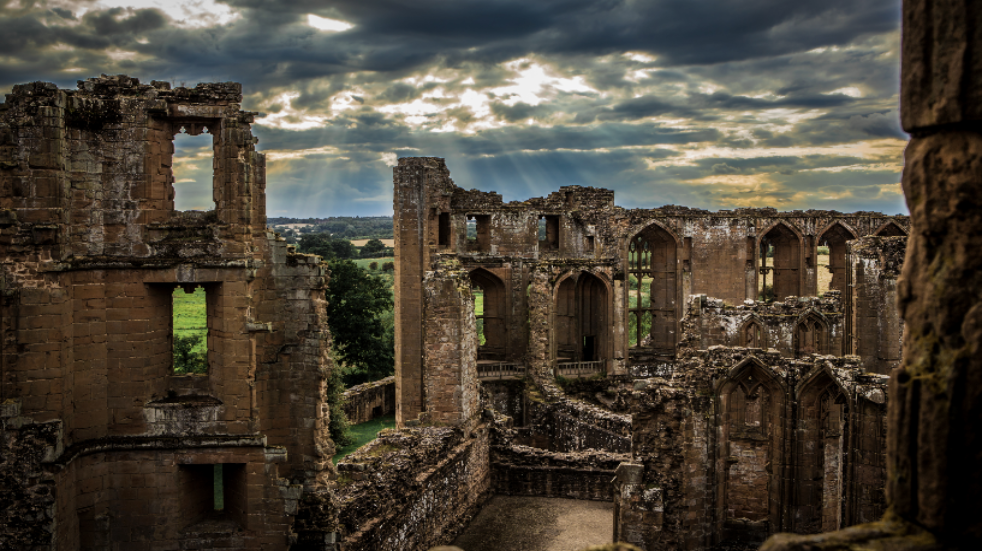
Bolsover Castle
Perched on top of a hill, Bolsover Castle is a fairytale Derbyshire mansion that dates from the Stuart period and was built to impress – something it continues to do to this day. Originally conceived as a luxurious and romantic recreation of a Norman castle by the courtier Sir William Cavendish, work began in 1612. Its Little Castle contains beautiful wall paintings, carved marble fireplaces, gilded panelling, lavish wall art and opulent painted ceilings, in a labyrinth of sumptuous rooms. There are no barriers here and all of the reproduction furniture can be sat on, allowing you to imagine yourself living the life of a 17th-century aristocrat. Charles I visited in 1634, and Sir William spent an extraordinary £15,000 on banquets and entertainment for the king.
You can take a tour of the castle with an interactive multimedia guide, which helps you picture what the huge Terrace Range, originally a series of stately rooms that formed the entrance to the castle, would have looked like in its heyday. Either pick up a special handset when you arrive or download an adult or family guide for your iPhone.
Outside, the castle's wall walk has been restored, meaning that for the first time in 250 years you can enjoy its remarkable views of the fountain garden below and the surrounding Derbyshire countryside. Meanwhile, the extravagant Riding School hosts Cavendish's Horses events on weekends from April to September, showcasing the art of dressage. See the castle's website for more details.
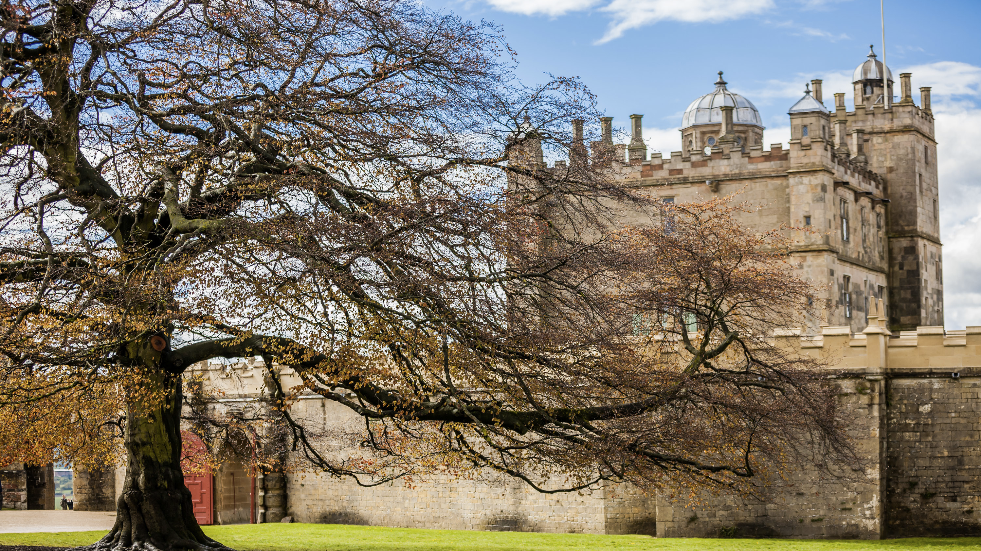
Wrest Park
There are country house gardens – and then there are the three centuries of landscape design at Wrest Park. The original manor was built in the early 14th century but it wasn't until the second half of the 17th century that the first formal gardens, and a canal known as the Long Water, were laid out. The landscape architect Capability Brown was brought in to remodel the park in 1758. The old house was demolished in the 1830s by Thomas Robinson, 2nd Earl de Grey, and replaced with a French-style mansion surrounded by formal flower gardens. While you're enjoying the gardens, keep an eye out for focal points such as a Chinese temple and bridge, the stunning Archer Pavilion and over 40 statues.
Children won't want to miss the outdoor play area (which includes a zip wire and a pavilion to climb), and there's also an activity backpack and audio trail to help younger visitors explore the grounds. Free tours of the gardens take place on Tuesdays, Thursdays and some Sundays – visit the Events page for details.
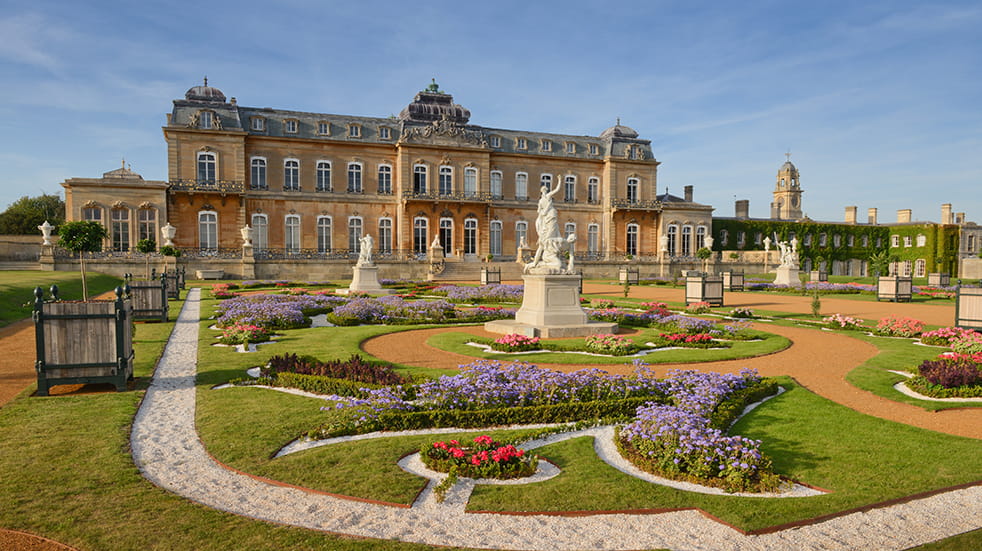
Eastern England
Framlingham Castle
The 12th-century Framlingham Castle was once the centre of a vast network of power. It was built after the Norman Conquest by Roger Bigod, Earl of Norfolk, and was home to the Dukes of Norfolk for more than 400 years. It was initially constructed from wood, with stone buildings added after 1150.
In 1635, the castle was sold to philanthropist Sir Robert Hitcham, who funded the installation of a poor house. It was eventually put under the guardianship of the Ministry of Works in 1913. Today you can enjoy a walk along the 10.5 metre-high walls and visit an exhibition space on the newly created mezzanine level.
There is also a range of hands-on activities for families, including games and dressing-up – your chance to try on costumes from throughout the ages, from a Norman helmet to a workhouse cap. Or explore the castle as part of a family trail, based around what would happen if the castle was under siege, which is available to purchase for £1.
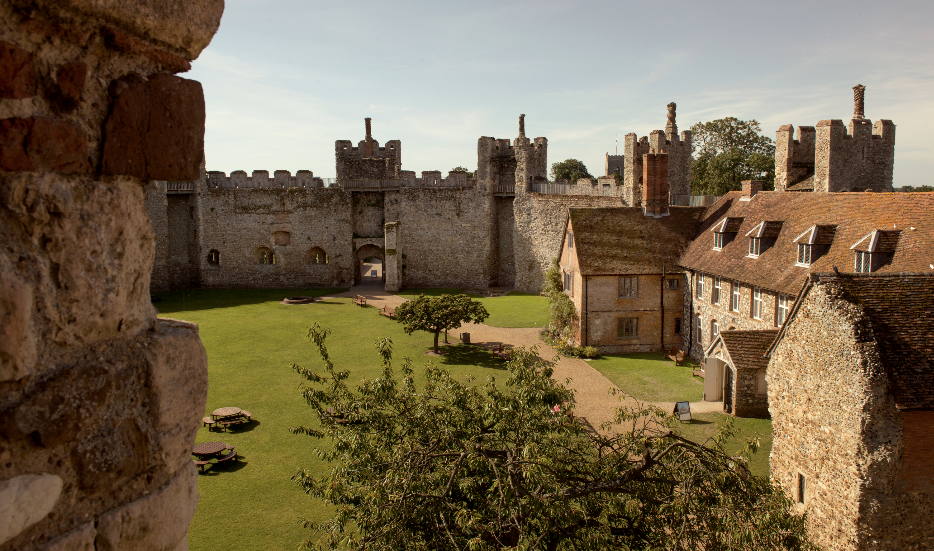
Grime's Graves
This peculiar looking terrain, which is roughly halfway between Cambridge and Norwich, has the appearance of a lunar landscape but Grime's Graves is in fact, a Neolithic flint mine – and the only one in Britain that is open to visitors. The site consists of over 400 backfilled pits that were dug over 5,000 years ago, although it wasn't until one was excavated in 1870 that it was discovered what their purpose was.
This is a fascinating location to visit with older children – you can even descend nine metres down a ladder into one of the excavated shafts to see the jet-black flint. (There is no access to the shaft for children under 10 or for those with limited mobility.) There is also a considerable range of wildlife to look out for, including foxes, birds of prey and deer, and plenty of space for children to run around, play ball games or fly kites.
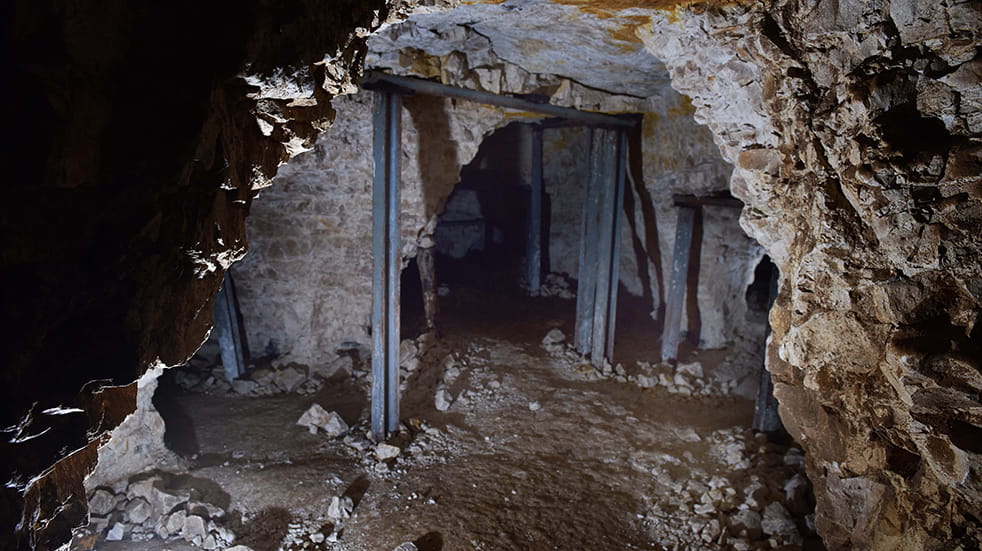
North-east England
Beeston Castle and Woodland Park
The ruined remains of Beeston Castle are among the most dramatic in the country, and provided inspiration for Romantic painters such as JMW Turner. The castle is spectacularly located on a rocky crag 100 metres above the Cheshire Plain and, on a clear day, it's possible to see as far as the Pennines. The earliest earthwork defences here can be traced to the late Bronze Age and the Iron Age. The castle itself was constructed in the 1220s by Ranulf, 6th Earl of Chester. Following a siege in 1644–45, it was surrendered by the Royalists and the castle was partly demolished.
Don't miss the spiralling well at the top of the castle – it's one of the deepest castle wells in England. Legend has it that it's the hiding place of the lost treasure of Richard II. The 14th-century king is said to have hidden bags of gold at Beeston on his way to quelling a rebellion in Ireland. After exploring the ruins, take a stroll around the enchanting, 40-acre woodland park.
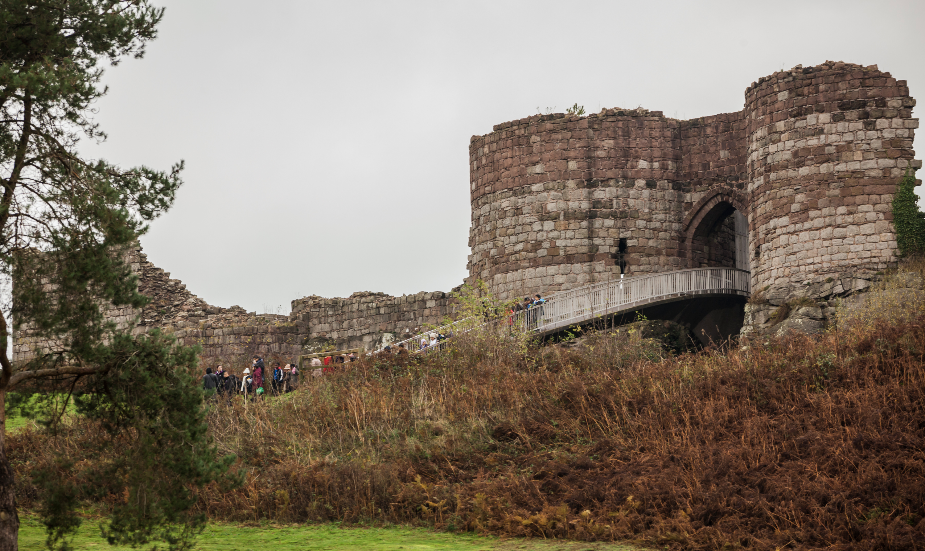
Warkworth Castle and Hermitage
Perched on the hilltop above the River Coquet, Warkworth Castle is thought to have originally been built as a motte-and-bailey castle by Henry, son of David I, after he became the Earl of Northumberland in 1139. Many of the features that can be seen today date from between 1199 and 1214, including the gatehouse, Carrickfergus Tower and east curtain wall, while the cross-shaped keep dates mainly from the late 1300s.
There are activity sheets for children (available from the front desk), in which Percy the lion helps you find objects at the castle, such as a quill and parchment, and a horn mug used for drinking ale. Also helping to bring the castle to life are special 'smelly cubes', which recreate the odours of the beer cellar, church and the latrines. Sniff them if you dare!
After exploring the fortress, take a walk along the river followed by a boat trip to visit a secluded chapel known as the hermitage, which is carved out of the cliff rock.
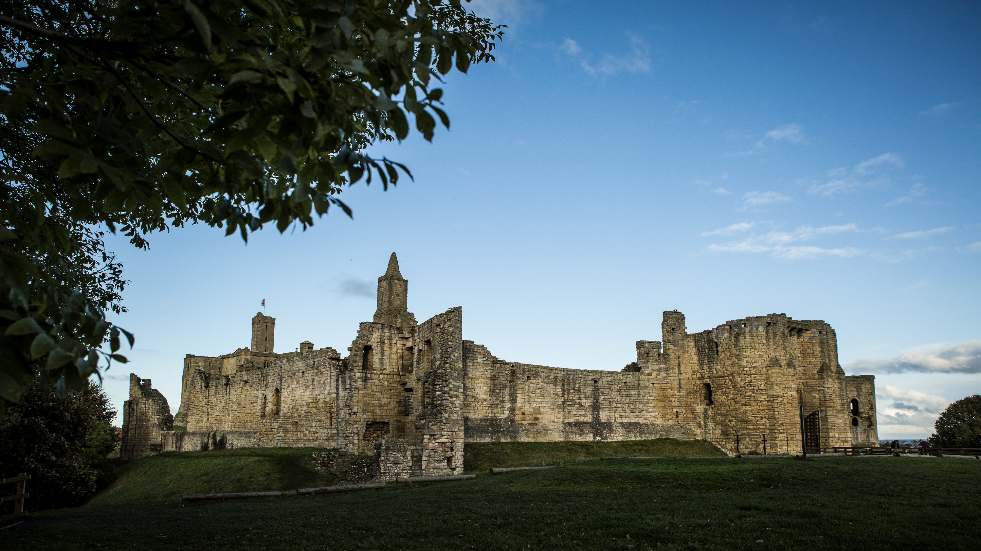
Dunstanburgh Castle
Thomas, Earl of Lancaster – at the time the wealthiest nobleman in England – began building Dunstanburgh Castle, a huge Northumberland fortress in 1313, when there was open hostility between the earl and King Edward II. Unfortunately for the earl, after his rebellion was defeated, he failed to reach the safety of Dunstanburgh and was executed in 1322.
The castle was subsequently the scene of intense fighting during the Wars of the Roses in the 15th century, and was captured twice by Yorkist soldiers.
Take a walk along the stunning coastline to reach the castle. Once there, explore the impressive twin-towered keep, and enjoy a picnic at one of the many picnic areas around the site. The grass expanses are also ideal for all sorts of games, while paths around the edge of the property provide excellent opportunities to spot wildlife, including nesting seabirds and birds of prey.
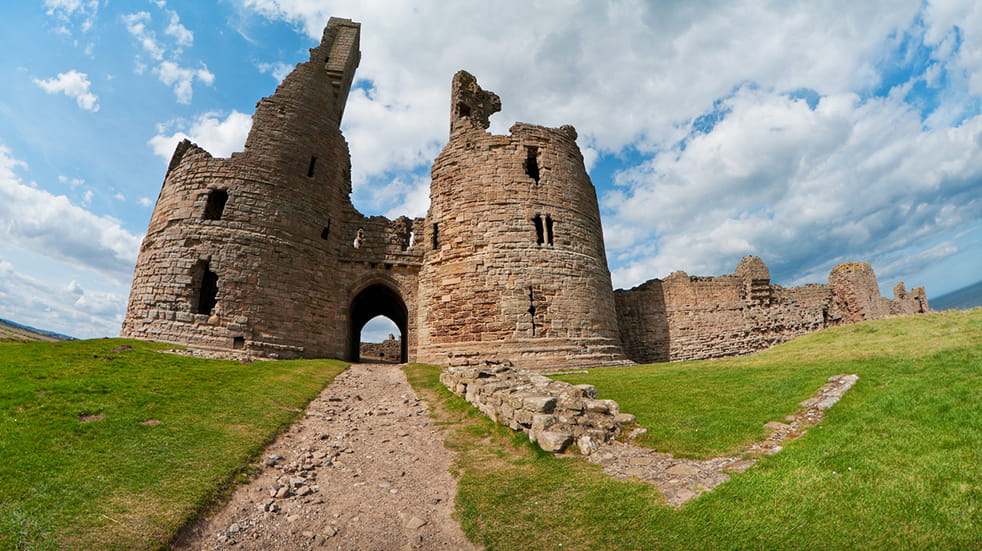
Middleham Castle
Once the childhood home of Richard III, Middleham Castle in the Yorkshire Dales is based around a Norman great tower, probably built in the 1170s and one of the largest in the country. The castle was later developed further by the powerful Neville family, who owned it until the late 1400s. In 1464, during the Wars of the Roses, a number of defeated Lancastrians were executed here.
On Henry VII's accession to the throne the castle came under the ownership of the Crown but, by the middle of the 16th century, it was in a poor state of repair and it wasn't until 1897 that serious conservation work began.
Today, although it is roofless, extensive remains are still in place, making it an intriguing place to explore – you can even see the remnants of the oven and horse mill in the grounds. A viewing platform provides wonderful views of Wensleydale, while an exhibition brings together the personalities whose lives have been part of the castle's history.
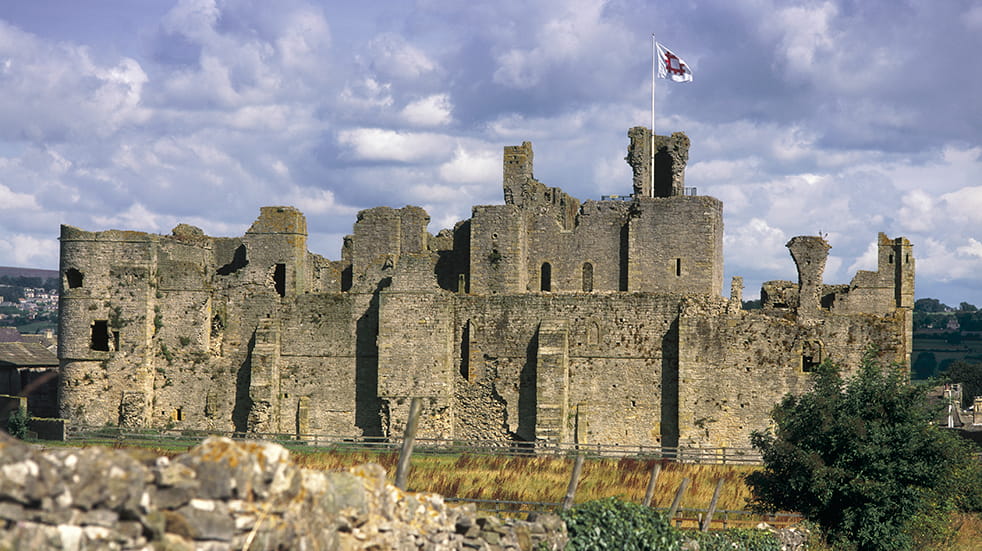
Birdoswald Roman Fort
It's incredible to think that, at its height, the Roman Empire was the dominant power across the Mediterranean basin, most of western Europe and large areas of northern Africa – yet was unable to hold and conquer Scotland. Instead, the northernmost part of the empire ended at Hadrian's Wall, a 73-mile long barrier that guarded against barbarian invaders. Birdoswald Roman Fort in Cumbria is the best place to see the longest continuous remaining stretch of the wall (now a World Heritage Site), and there are extensive remains too of the fort itself.
You can follow the fort walls to discover watch towers and gates, including the main east gate – the best preserved fort gate along the entirety of Hadrian's Wall – along with a medieval hall and tower house. An exhibition includes plenty of hands-on activities, and you can even take a quiz to find out what role you would have played in the Roman army.
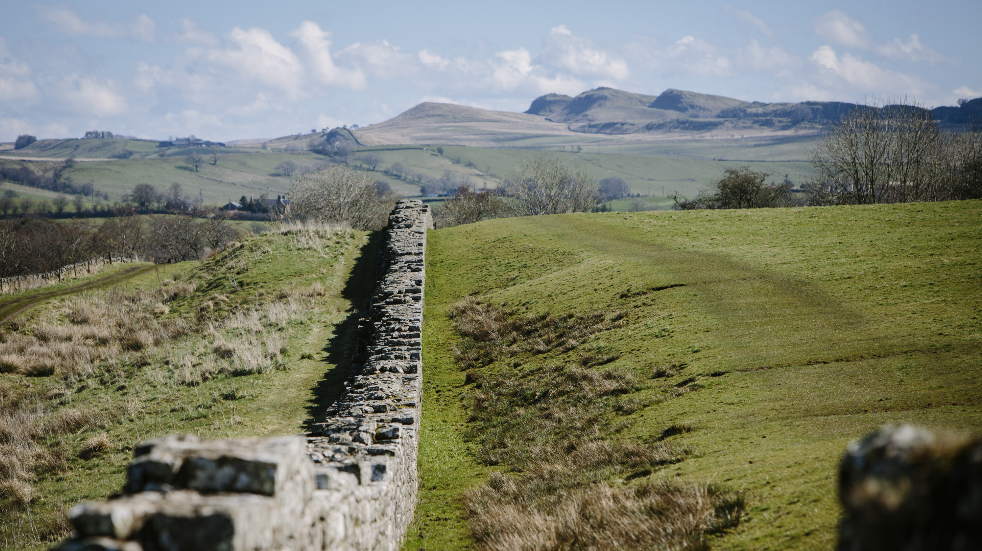
Whitby Abbey
From its position on a windy headland, the striking remains of the 13th-century Benedictine Whitby Abbey dominate the local landscape. They were the inspiration for Bram Stoker's novel Dracula – and it's easy to see why. After the abbey was dissolved in 1539 on the orders of Henry VIII, its church began to collapse in the 18th century and, by the time Whitby became a popular seaside resort in the early 19th century, the Gothic ruins had become a tourist destination. With its fantastic views over the town and harbour, the abbey continues to captivate sightseers almost 800 years after building work first began on it.
Don't miss the diverse range of events that take place at the abbey, including live performances of Dracula staged in the very ruins that inspired the book, and the chance to see Viking re-enactors taking part in sensational combat displays – children can even get involved in their own Viking skirmish. For details, visit the abbey's website.
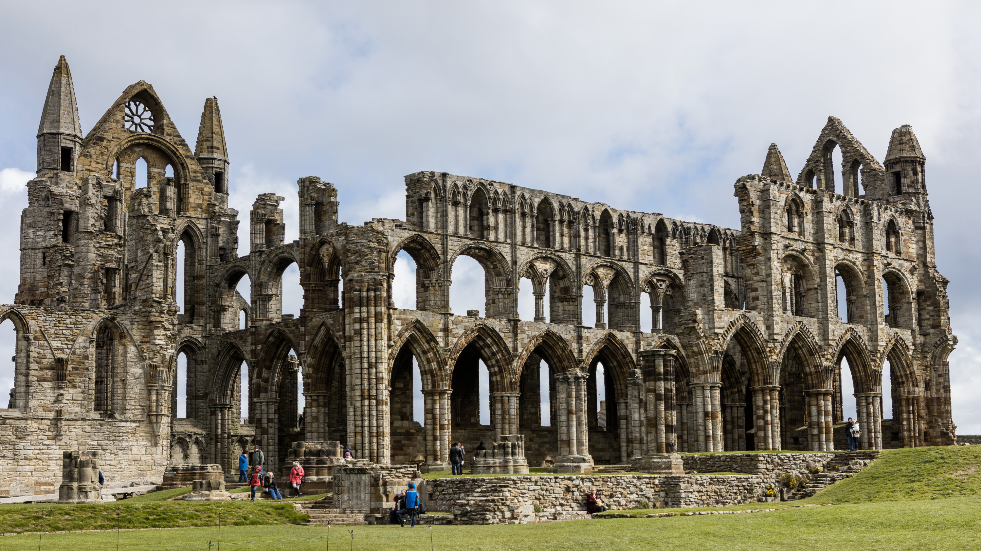
York Cold War Bunker
English Heritage's most modern property is this chilling monument to the Cold War. The York Cold War Bunker is a semi-subterranean building – one of the best surviving nuclear bunkers in England – and acted as the headquarters of Number 20 Group, Royal Observation Corps, from 1961 to 1991 and was designed to monitor fallout in Yorkshire in the event of a nuclear attack. The site is known to have been on alert in October 1962, during the Cuban Missile Crisis.
Go through the blast-proof doors and you'll find yourself inside a time capsule filled with original monitoring and communications equipment. You'll also get to see the decontamination rooms and the sewage ejectors that were intended to help seal off those in the bunker from the outside world.
The bunker is open five days a week, from Wednesday to Sunday, and admission is by guided tour only – tours take place every hour. See the property's website for more information.

Lindisfarne Priory
A visit to Lindisfarne Priory, located on Holy Island just off the Northumberland coast, gives you the chance to follow in the footsteps of the monks who constructed the priory almost 1,400 years ago. Monks first came to the island in AD635 but fled after a grisly Viking raid in AD793, and the ruins here today date from the early 12th century. In the museum, you can learn more about the Viking attack, the cult of St Cuthbert, and the medieval manuscript known as the Lindisfarne Gospels.
The priory is a great place to give kids the opportunity to expend some energy. The high walls in the West Range are ideal for games of hide-and-seek, and the Outer Court provides ample space for ball games. While you're here, you'll also be able to spot eider ducks and herons, and you might even glimpse a seal if you look out to sea from behind the church.
The tidal island is cut off from the mainland twice a day and to reach it you have to cross the causeway at designated safe crossing times.
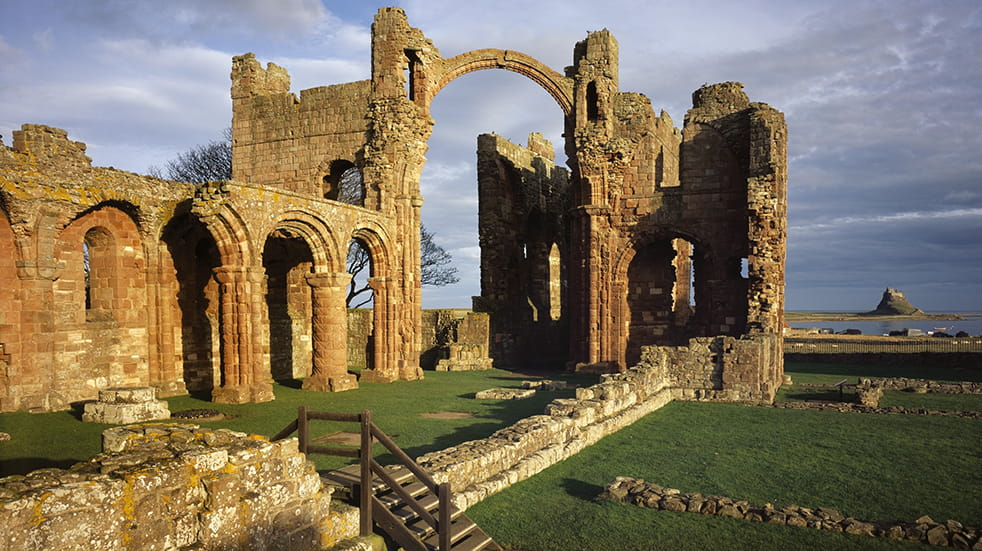
Stott Park Bobbin Mill
Located next to Lake Windermere in Cumbria, Stott Park was built in 1835 and once produced 250,000 wooden bobbins, which held yarn or thread and were used in the weaving and spinning industries, every week. It is now the only working bobbin mill left in the Lake District, and visitors can still see the production process take place on the original belt-driven machinery – the mill is almost identical to how it looked 100 years ago. Guided tours, which last for around 45 minutes, begin at half-past the hour, and visitors can buy a bobbin made in the mill in the gift shop.
A hands-on family trail gives children the chance to dress up and imagine what working at the mill, which once employed 250 men and boys, would have been like. Kids can also look around the woodland surrounding the mill and there are picnic tables and a small play area.
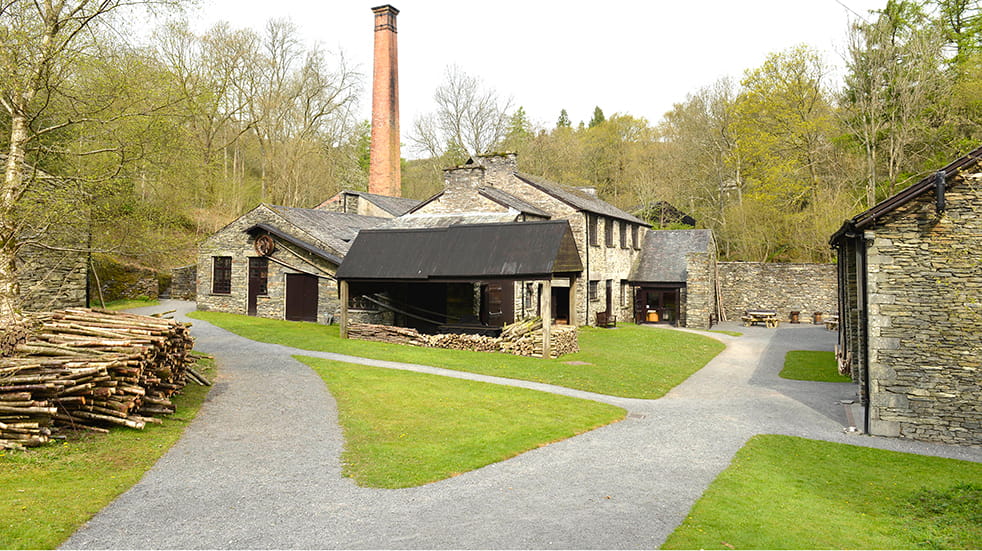
Do more with Boundless
Working or retired from the public sector or civil service? Get free entry to top attractions, discounts on restaurants, savings on high-street brands, plus dozens of other deals on motoring, insurance and more. Learn more about Boundless savings.
All images © English Heritage


